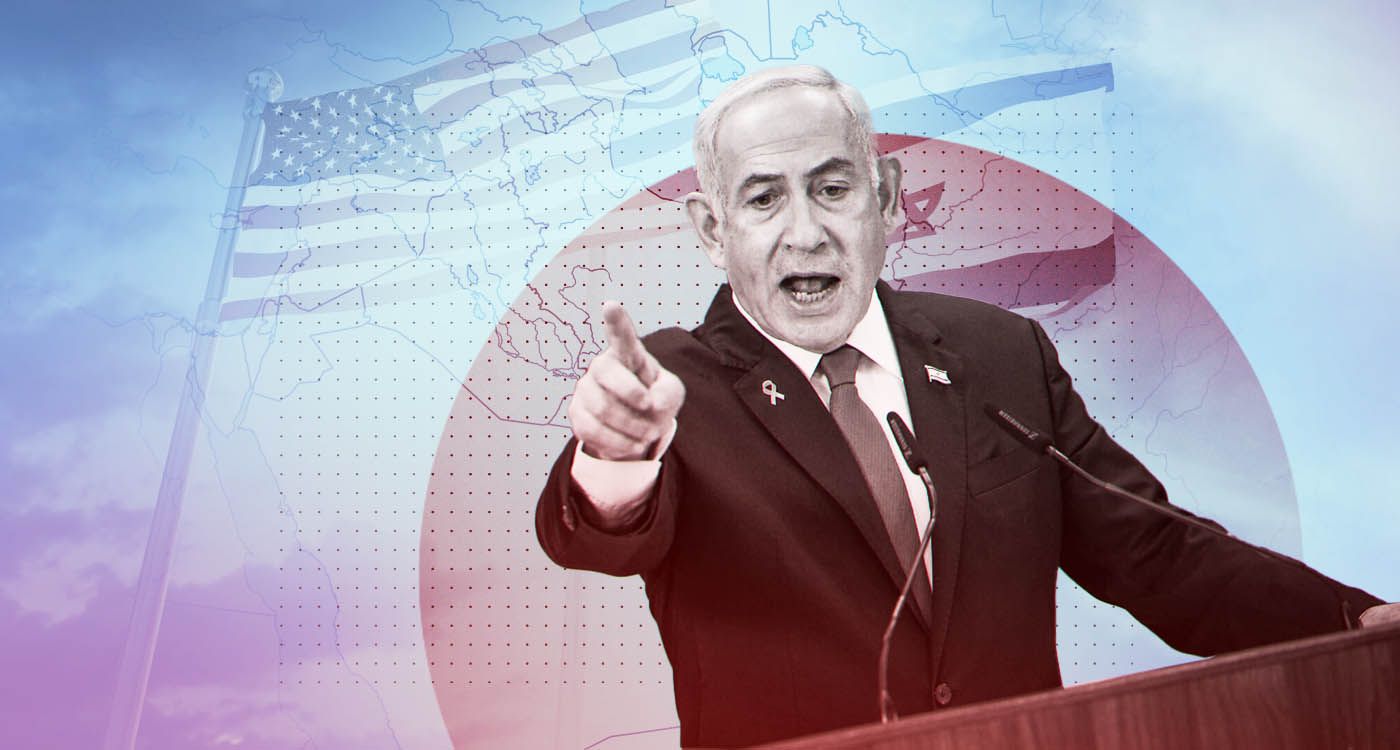- Home
- Middle East
- Netanyahu: The Opportunist Who Rode America’s Wars to Redraw the Middle East

©This is Beirut
For over three decades, Benjamin Netanyahu has stood at the intersection of Israeli ambition and American power, a figure as enduring as the conflicts that define the Middle East. Since the early 1990s, Netanyahu has not merely responded to the region’s shifting sands—he has, in the eyes of critics and admirers alike, helped shape them. From Baghdad to Tripoli, from Damascus to Tehran, the collapse of Arab regimes over the past 30 years has often unfolded against the backdrop of Netanyahu’s warnings, lobbying and relentless messaging.
It began with a vision, or at least an outline of one. In 1996, Netanyahu’s first term as Israeli prime minister coincided with the publication of “A Clean Break: A New Strategy for Securing the Realm.” Drafted by American neoconservatives and shared with Netanyahu’s government, the document urged Israel to abandon the peace process and adopt a policy of confrontation—removing Saddam Hussein, containing Syria and toppling Iran’s clerical regime. While Netanyahu did not author this manifesto, it echoed his instincts: he believed that Israel’s survival required the weakening or removal of hostile Arab regimes.
This vision aligned neatly with rising voices in Washington’s corridors of power. As neoconservatives like Richard Perle and Paul Wolfowitz gained influence, so too did Netanyahu’s preferred regional order take shape.
Perhaps no moment encapsulates Netanyahu’s role as regional salesman for regime change better than his 2002 testimony before the US Congress. With America still gripped by post-9/11 trauma, Netanyahu assured lawmakers that removing Saddam Hussein would trigger a domino effect, “If you take out Saddam… I guarantee you that it will have enormous positive reverberations on the region.” He invoked the specter of Iraqi nukes and painted Saddam as the keystone of Arab tyranny.
Of course, the Iraq War unfolded not because of Netanyahu alone. The Bush administration’s agenda, flawed intelligence, oil interests and a thirst for retribution all drove the invasion. But Netanyahu’s voice amplified the march toward war, giving Israeli cover to a conflict that ultimately redrew the regional map—toppling Saddam and unleashing chaos that still haunts Iraq and its neighbors.
Every few years, like clockwork, Netanyahu returns to his favorite theme: Iran’s nuclear program. In speeches at the UN, addresses to the US Congress and countless interviews, he has framed Tehran as the existential threat to not just Israel, but global civilization. His 2015 speech to Congress opposing Obama’s nuclear deal (the JCPOA) remains a masterclass in spectacle, defiance and political theater, infuriating the White House while delighting American hawks.
His persistence paid dividends with Donald Trump. In 2018, the US abandoned the JCPOA, citing Iranian duplicity—charges Netanyahu had trumpeted for years. And when Israel struck Iran’s nuclear sites in 2025 under Operation Rising Lion, Netanyahu framed it not as a military operation, but a moral duty to humanity. Yet, despite his rhetoric, Washington stopped short of endorsing regime change, preferring nuclear containment to destabilization.
Did Netanyahu topple Arab regimes? The truth is more complex. The fall of Saddam, Gaddafi and, most recently, Assad was the result of multifaceted dynamics: internal dissent, US and NATO interventions, shifting alliances and, in Syria’s case, Russian calculations. Netanyahu’s fingerprints are visible—through lobbying, speeches and intelligence sharing—but the hand that struck was often American, driven by its own priorities.
Nonetheless, one cannot ignore how Netanyahu’s framing of threats, especially the marriage of nuclear danger with terror, has permeated US debates and decision-making. His personal rapport with American leaders, from Clinton to Trump, and his ability to command congressional standing ovations underscore his unique position as both advocate and architect of Israel’s regional vision.
Today, as Netanyahu once again leads Israel through conflict with Iran, his calls for regime change grow louder. Yet, even with decades of alignment between Israeli and American hawks, his power to “move America” has limits. Trump’s reported veto of a plan to assassinate Ayatollah Khamenei is proof that even Netanyahu’s most trusted allies set their own red lines.
The claim that Netanyahu single-handedly convinced the US to topple Arab regimes oversimplifies a tangled web of interests, agendas and events. What he has done—brilliantly, consistently—is to keep Israel’s enemies on America’s radar, ensuring that whenever the US looks at the Middle East, it does so through a lens polished by Israeli fears and ambitions.
Netanyahu has outlasted most of his Arab rivals. Saddam is gone. Gaddafi is gone. Assad, in exile or dead depending on which reports one believes, is no longer a player. And in Tehran, an embattled regime clings to power as Netanyahu urges its downfall. More than any specific policy or war, his true legacy may be his mastery of the long game: framing the narrative, shaping the debate and surviving—always surviving—while the region burns.
Read more





Comments